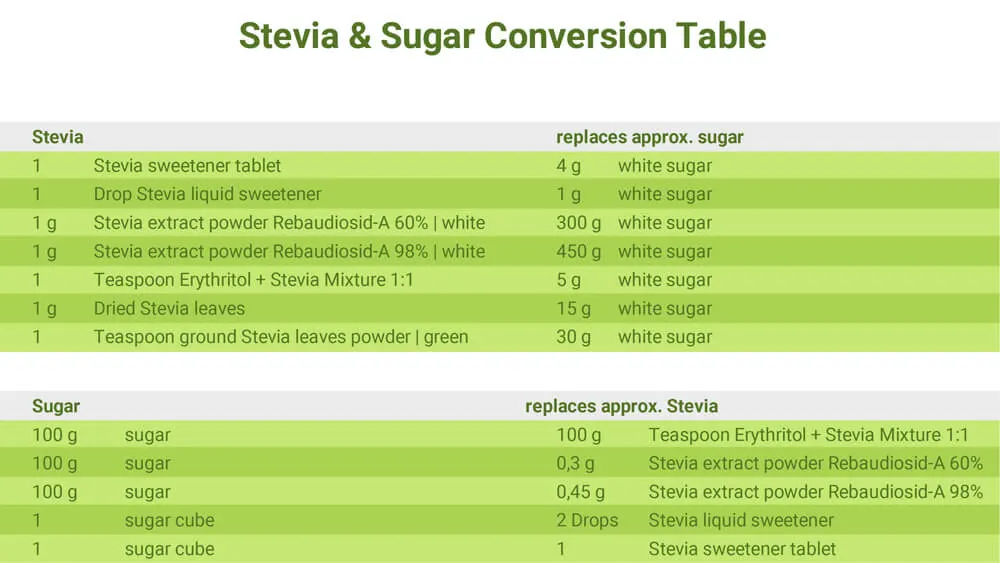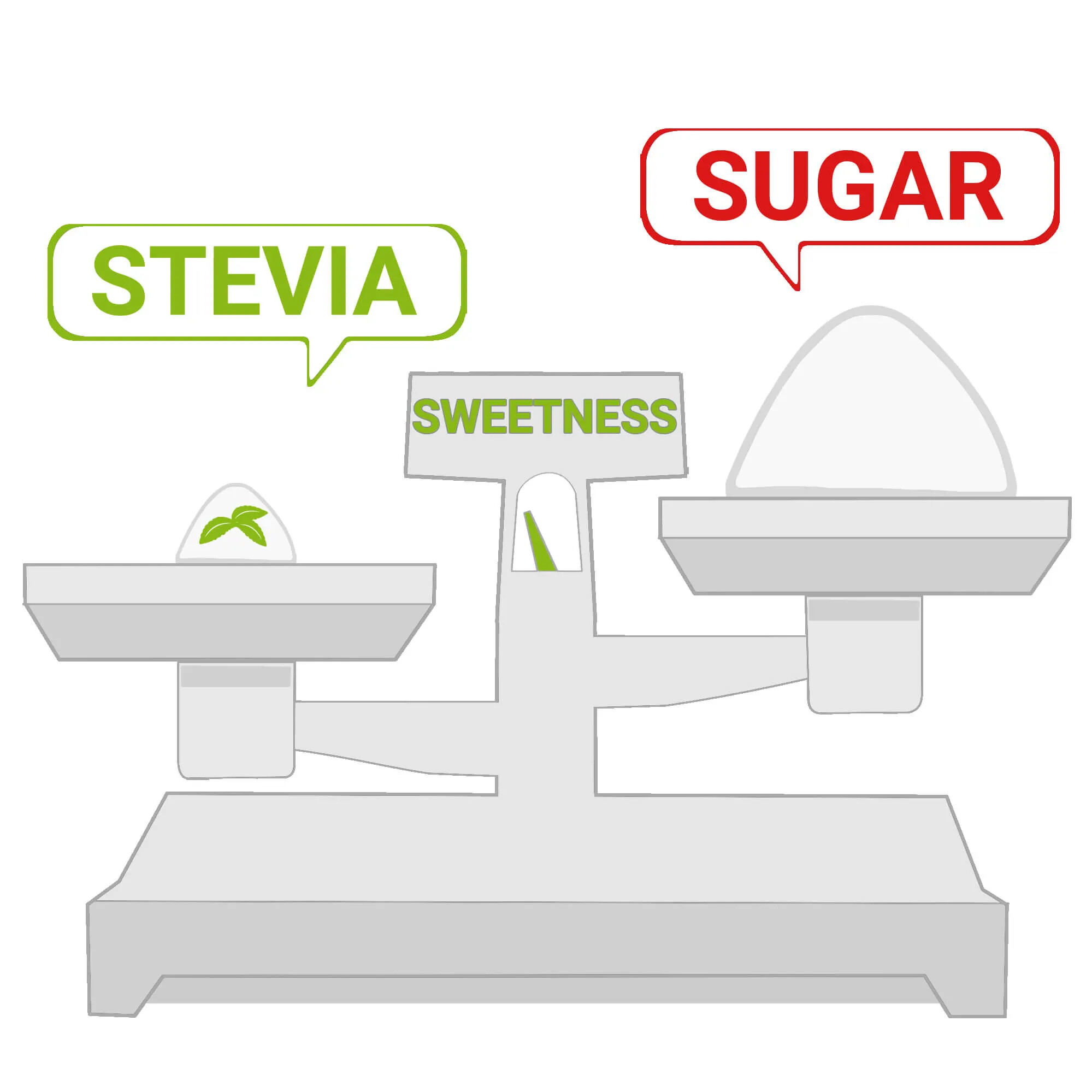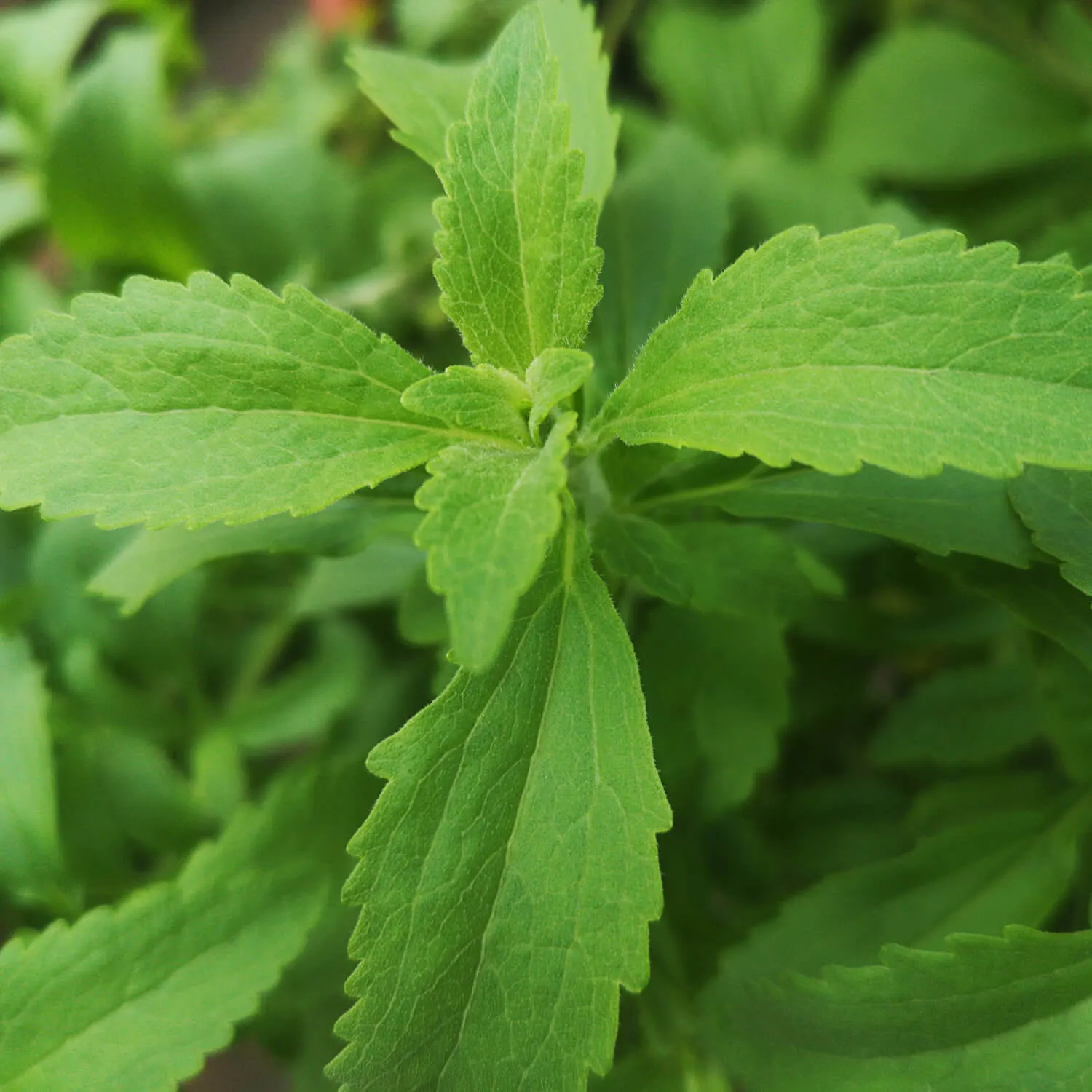How to dose Stevia correctly?
Stevia guide for the correct dosage of Stevia
It is not easy to give a recommendation on the correct dosage of Stevia for drinks and food. The individual Stevia products often differ greatly in taste and sweetness.
Therefore, it is particularly advisable to make the switch from sugar to Stevia slowly. Enormous differences in the content of steviol glycosides/rebaudiosdene (Stevia) occur especially with whole leaves and the white Stevia extract powder made from them. This is often due to the sometimes very different plant varieties and growing conditions.
Although the industrial processing of Stevia products is largely standardised, considerable variations in quality are possible depending on the manufacturer.
A very decisive factor is the quality of the raw materials used by the manufacturers. In order to mask the taste of cheap Stevia raw materials, dextrose, fructose, glucose, etc. and flavours, especially vanilla flavours, are often added.
Therefore, pay attention to the list of ingredients the next time you shop!
As a rule, the dosage recommendations given by the manufacturer will help you. In contrast to the plant parts, Stevia sweetener tablets, liquid sweeteners or crystalline spoonable sweeteners are much easier to dose. Our Stevia conversion table offers you some help.

Is the sweetening power of Stevia comparable to that of sugar?
The difference between sugar and Stevia products in terms of sweetness is huge. Generally speaking, Stevia is about 300 to 450 times sweeter than regular sugar. However, above a certain amount, the sweet taste does not become stronger, because our taste buds do not accept the effect of the steviol glycosides evenly.
Ultimately, every user should sweeten according to his or her taste sensation. So, after some time, everyone can make a personal conversion table.
How to sweeten food with Stevia
When it comes to the correct dosage of food, the quality of the Stevia product plays a major role. While pure Stevia leaves and Stevia products produce a sweet taste, stevioside products are rather mild and free of bitter substances. High-quality products are characterised by a particularly natural sweetness.
The initially difficult handling of Stevia products requires some patience from the user. After some time of use, however, one gets the necessary sensitivity for the right dosage.
What influences the taste?
In addition to the steviol glycosides, the nutrient composition, the acidity and the temperature of the food also play a role in determining the taste.
Is the use of Stevia identical to that of sugar?
Since Stevia has a much lower density than sugar, the sugar substitute must be thoroughly mixed in when preparing food. When baking, you should therefore use more flour or less liquid.
Does Stevia change the taste?
Foods that contain bitter substances should only be sweetened very carefully, because especially the green Stevia leaf powder has a flavour-enhancing effect.
Stevia overdose
An overdose of Stevia is not harmful to health, but it can cause a particularly bitter taste. It does not matter whether the product is good or bad. Therefore, try to avoid overdosing by being more careful when adding the sweetener.

Stevia and sugar quantity comparison example

Correctly dosing sweeteners from the Stevia plant
Dosing Stevia correctly
Stevia is sold in various forms. But the products are also available as pure white powder, the so-called Stevia extract (e.g., Steviapura, Pure Highly Concentrated Stevia Extract 60% or 98% Rebaudioside-A), in liquid form (e.g. Steviapura, Stevia Liquid Sweetener) or as an erythritol and Stevia mixture (e.g. Steviapura, Stevia Crystalline Spoonable Sweetener).
Especially the use of Stevia extract in powder form is suitable for baking. It is odourless and water-soluble and can withstand temperatures of up to 200 °C.
Which Stevia product for what?
The various Stevia products on the market differ considerably in terms of their possible uses and sweetness for different doughs.
The development of the sweetness in the baked goods is influenced by both the baking time and the type of dough. For most recipes with yeast, shortcrust or sponge dough, you can use Stevia extract powder (with about 300-450 times the sweetening power).
Basically, we always recommend dissolving the extract powder in liquids, e.g., milk or water, which are added to the dough.
Even with short baking times, its sweetening power will then unfold well. Since shortcrust pastry contains little liquid, the Stevia extract should be mixed well with the butter right at the beginning.
Stevia mixes for special cases
For sponge cake dough, we recommend a calorie-free sugar substitute as a Stevia mixed product made from erythritol and Stevia. Stevia is also well suited for fruit creams. The fruits used should be very ripe and sweet. Quince or rhubarb are sour varieties and generally need to be heavily sweetened.
Stevia, it's the dosage that counts
Accurate dosing is essential and we recommend using a digital precision scale for baking with Stevia. If too little Stevia is used, the pastry or cake may not be sweet enough. If overdosed, Stevia can quickly taste bitter.

 German
German Dutch
Dutch French
French Italian
Italian Portuguese
Portuguese Spanish
Spanish
